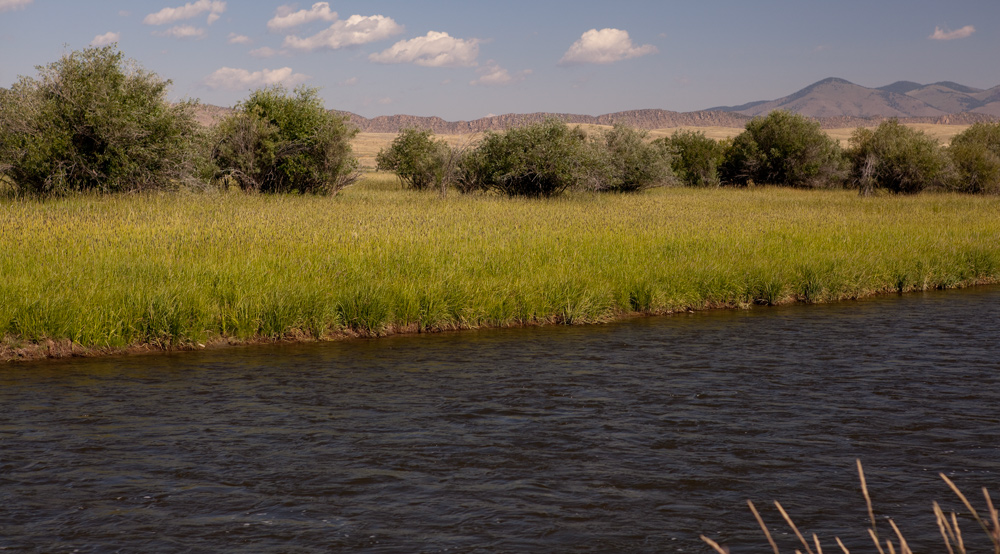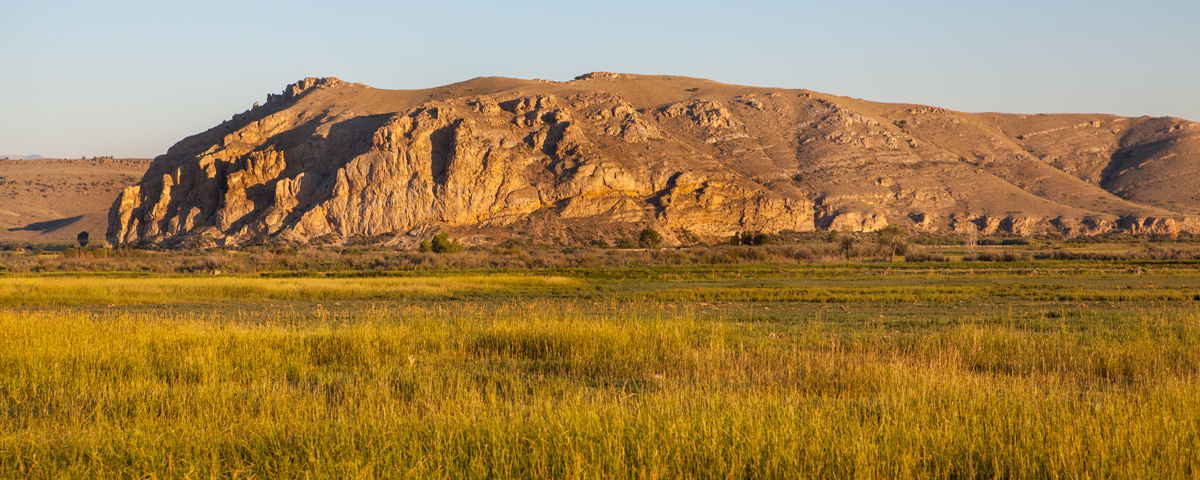Beaverhead River, MT The men poling the canoes find the Beaverhead River more gentle than the Big Hole. Sacagawea recognizes “the beaver’s head” and informs the captains that the summer home of her people is not far ahead.
Beaverhead River
Near Clark’s 3000 Mile Island camp above Beaverhead Rock, 26 July 2011. © by Kristopher K. Townsend. Permission to use granted under the Creative Commons Attribution-Share Alike 4.0 International license.
Sacagawea Recognizes the Beaver’s Head[1]Originally aired weekdays by Yellowstone Public Radio during the Bicentennial observance of 2003-2006. Narrated by Hal Hansen. Scripts by Whit Hansen and Ed Jacobson. Produced by Leni Holliman. © … Continue reading
Dispatching Hunters
as one canoe had been left we had now more hads to spear for the chase; game being scarce it requires more hunters to supply us. we therefore dispatched four this morning.
—Meriwether Lewis
Slowed by River Bends
our rout up the river which we find much more gentle and deep . . . . very crooked many short bends constituteing lage and general bends; insomuch that altho’ we travel briskly and a considerable distance yet it takes us only a few miles on our general course or rout . . . . we use the seting poles today almost altogether.
—Meriwether Lewis
Beaverhead Rock
© 22 July 2013 by Kristopher K. Townsend. Permission to use granted under the Creative Commons Attribution-Share Alike 4.0 International license.
Recognizing the Beaver’s Head
the Indian woman [Sacagawea] recognized the point of a high plain to our right which she informed us was not very distant from the summer retreat of her nation on a river beyond the mountains which runs to the west. this hill she says her nation calls the beaver’s head from a conceived remblance of it’s figure to the head of that animal.
—Meriwether Lewis
Shoshone Horses Required
she assures us that we shall either find her people on this river or on the river immediately west of it’s source; which from it’s present size cannot be very distant. as it is now all important with us to meet with those people as soon as possible, I determined to proceed tomorrow with a small party to the source of the principal stream of this river and pass the mountains to the Columbia; and down that river untill I found the Indians; in short it is my resolusion to find them or some others, who have horses if it should cause me a trip of one month.
—Meriwether Lewis
Collecting Hay Seeds
there is a grass [3] also with a soft smooth leaf that bears it’s seeds very much like the timothy but it dose not grow very luxouriant or appear as if it would answer so well as the common timothy for meadows. I preserved some of it’s seeds which are now ripe, thinking perhaps it might answer better if cultivated, at all events is at least worth the experiment.
—Meriwether Lewis
Shannon Still at Large
at Noon Reubin Fields arrived and reported that he had been up Wisdom river some miles above where it entered the mountain and could find nothing of Shannon
—Meriwether Lewis
Weather Diary
State of the Thermometer at rise
Weather at rise
Wind at rise
State of the Thermometer at 4 P.M. Weather at 4 P.M. Wind at 4 P.M. 54 [above 0] fair after rain S W. 82 [above 0] cloudy after fair S W a thunder Shower last evening.
—Meriwether Lewis[2]To assist the reader, the editor of this web page has omitted the date column and spelled out some abbreviations.
Beaverhead Rock is a High Potential Historic Site along the Lewis and Clark National Historic Trail managed by the U.S. National Park Service. The rock is not publicly accessible but there is parking and exhibits on MT Hwy Highway 41.
Notes
| ↑1 | Originally aired weekdays by Yellowstone Public Radio during the Bicentennial observance of 2003-2006. Narrated by Hal Hansen. Scripts by Whit Hansen and Ed Jacobson. Produced by Leni Holliman. © 2003 by Yellowstone Public Radio. |
|---|---|
| ↑2 | To assist the reader, the editor of this web page has omitted the date column and spelled out some abbreviations. |




